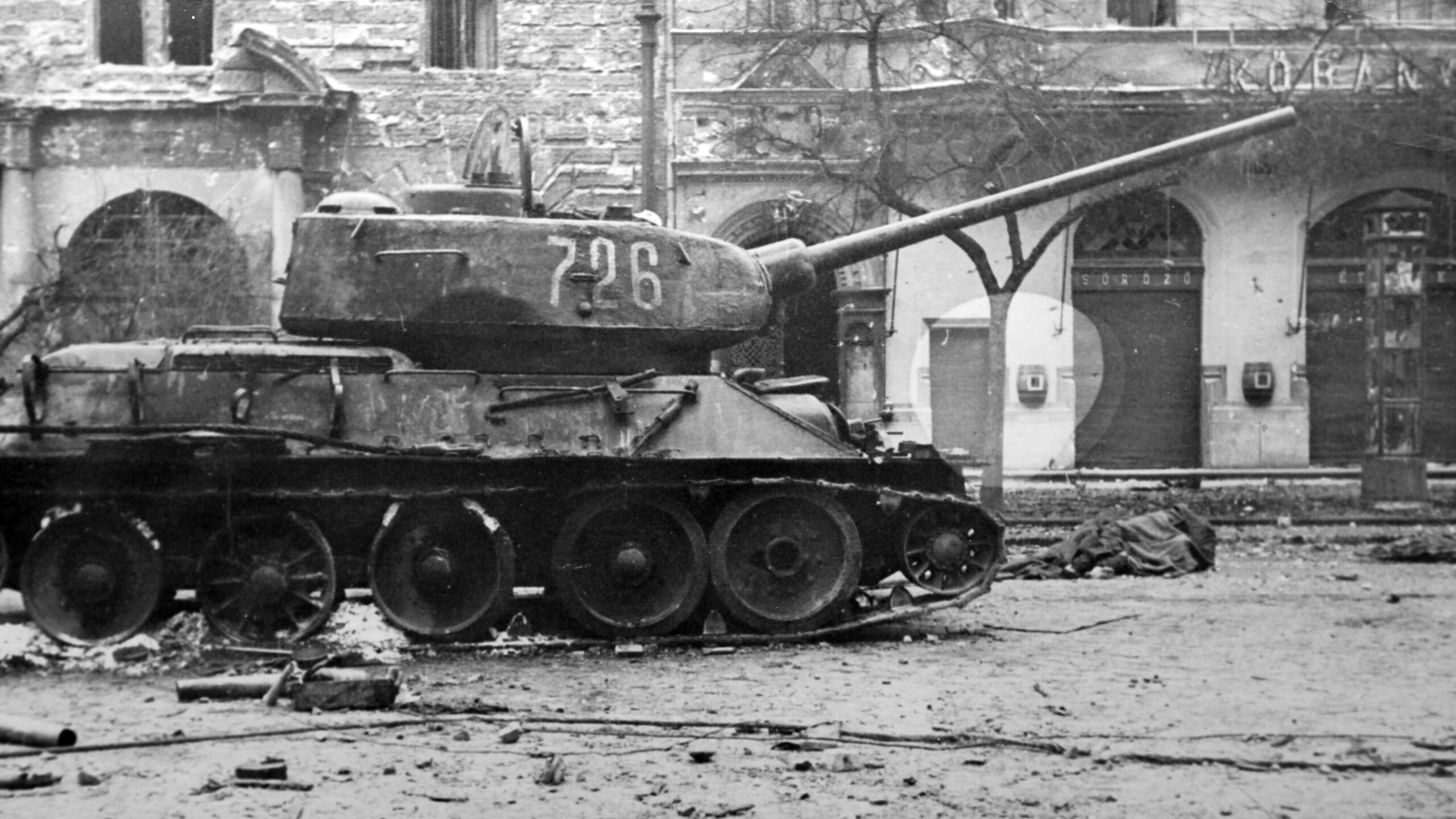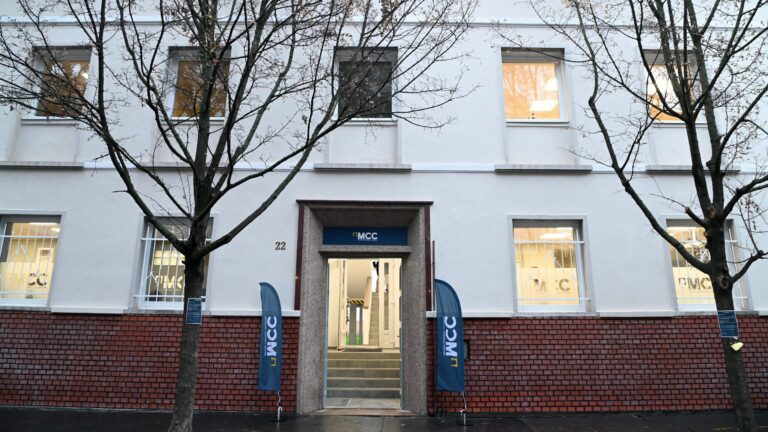In August 1957, the Hungarian police arrested a former revolutionary of the failed 1956 uprising. As stated in the arrest warrant, Tibor Spielmann had served as the messenger of revolutionary commander József Dudás, executed earlier that year, and had apparently participated in persuading Hungarian soldiers to switch sides during the uprising. He was apprehended in Balatonföldvár, and he made a detailed confession during his pre-trial detention.
Surviving the Ghetto and Joining the Revolution
According to Spielmann’s testimony, he was born in 1932, had completed four years of primary school, and worked as a small-scale toymaker. As a Jewish youngster, he had survived the Budapest ghetto. His father had escaped from unarmed labour service and later joined the partisans, but fell in Germany fighting alongside the Soviet army. Later, his sickly mother supported the family, working as a shop manager in Teleki Square, where Spielmann assisted her. In 1949, he attempted to emigrate to Israel (to make aliyah) but was caught at the border and received a warning. In 1952, he briefly served as a soldier.[1]
On 23 October 1956 he took part in the historic events at the Bem Statue and the Radio building. Later, he found himself at the headquarters of the Szabad Nép newspaper, where he saw the first armed revolutionaries and felt that ‘he had to do something for Hungarian freedom’. He struck up a conversation with József Dudás, who first tasked him with distributing revolutionary leaflets—which he carried out—then sent him on an assignment to persuade soldiers to switch sides and join the revolution. He could not carry out this task, however, as he could not get hold of a car. According to his testimony, later he and other revolutionaries went to the police station in Víg Street to obtain weapons: he brought back submachine guns and rifles. His testimony was largely supported by Dudás’ earlier statement during his own trial, although it seems that Dudás was not fully satisfied with Spielmann.
In pre-trial detention, this is how Spielmann described his state of mind at the time:
‘I firmly state that I did not join the counter-revolution with the intention of taking up arms against the people’s dictatorship, nor did I want a different social system. I only stood up against the mistakes of the past eleven years. I had heard much about the cruelties of the ÁVH (State Protection Authority), and I opposed the presence of Soviet troops in Hungary because I saw this as contributing to the country’s economic weakening.’
Of course, what else could he have said—after all, his mother was subpoenaed in his criminal case, clearly in order to pressure him. Eventually, at the end of the month, the police terminated the investigation without any explanation, concluding that Spielmann had not participated in armed fighting, and furthermore, he was a ‘young man who got caught up in the events and clearly was not aware of the real goals of the counter-revolution.’
Spielmann Becomes ‘Péter Sas’
Spielmann’s name next surfaced in a 1962 summary related to secret investigations against Zionists. Alongside his name, someone had written ‘Sándor’ by hand. This might not seem significant at first, but according to a subsequent document, in December 1962 secret police agents conducted an operation to reestablish contact with an informant who had previously operated under the codename ‘Sándor.’ ‘The aim of the operation was to clarify what the activities of the informant, tasked with reporting on Zionist youth, were, and to ascertain what connections he had at the time with hostile-to-the-regime individuals within the Jewish community.’
According to the report, ‘Sándor’ was ‘honest’ with the secret police—they appreciated such behaviour. In his youth, he was a member of the Habonim Dror Zionist group, and he was acquainted with Rabbi István Végházi, the lawyer Péter Járy, and Péter Rosenberg, a rabbinical seminary student, all described in the reports as ‘Zionists’. As stated in the reports, Sándor was ‘happy to assist us and considers it his patriotic duty to support our work once again.’
The file also contains a short bio of informant ‘Péter Sas.’ The text shows eerie overlaps between Spielmann’s and ‘Sándor’s’ stories. According to it, ‘Péter Sas’ father fell as a partisan in Germany in 1945, and he himself was once a member of the Habonim Dror Zionist group. For a time, his severely ill mother supported him, and she had a permit to operate a toy store between 1957 and 1960, but shortly before the date of the report, the permit had been revoked. In 1956, he was an assistant to József Dudás at the Szabad Nép headquarters. ‘I came into contact with the political police, with the relationship beginning in September 1957 and lasting until the end of 1960,’ the informant wrote. For a year, his handlers didn’t establish contact, and then they did, shortly before the date of the report. ‘I am deeply pleased that the interior authorities trust me,’ wrote ‘Péter Sas,’ who was involved with the Ministry of the Interior’s notorious III-2/III division, meaning that the internal counterintelligence was supposed to use him to report on ‘educational institutions’, although most of his surviving reports dealt with issues concerning the Jewish community.
The above story puts the fortunate end of Spielmann’s criminal case back in August 1957 into a new perspective: just a few days after his release, the intelligence service obviously already treated him as a ‘social contact’ under the name ‘Sándor.’ Later, he was presumably given a new alias for his new tasks, this tame as ‘Péter Sas’.
Informing on Dissident Zionist Leaders
The counterintelligence service was primarily interested in his Zionist connections. He was used for the surveillance of the Israeli embassy, but he was also used to gather information on a Jewish lawyer named Péter Járy.
At that time, Járy was a mid-level leader of the Budapest Jewish Congregation. As ‘Péter Sas’ reported, he was not a supporter of socialism, but he managed to hide that sentiment well, as he participated in the work of the Patriotic People’s Front (Hazafias Népfront). As he once confessed to ‘Péter Sas,’ if he had been able to, he would have definitely emigrated to Israel. Járy liked ‘Péter Sas,’ and even told him once that he wanted to become a judge just to help the cause of the Jewish community. When asked whether it made sense ‘for a person to work wholeheartedly for this cause,’ he replied: ‘It’s good to do something for the remaining Jewish community. I am also striving to become a judge, so I can strengthen my personal authority with an external social position.’ This report ended up in both ‘Péter Sas’ work file and in Járy’s surveillance records.
In August 1963, Járy hosted ‘Péter Sas’ at his apartment, the visit lasting one and a half hours. During this meeting, the lawyer discussed with the informant his desire to invite him to Holocaust memorial events. He expressed his wish for ‘Péter Sas’ to become more involved in community life, hoping that this might help ‘Péter Sas’ regain his old position. (Spielmann had also been a mid-level leader of the Budapest Jewish Congregation until 1959, after which he stepped down to avoid being officially forced to resign due to his role in the events of 1956.)
His handlers advised caution regarding his naïvefriend’s proposal: he should accept it for now but otherwise refrain from initiating anything. However, ‘Péter Sas’ proved even more successful, as he effectively infiltrated an opposition group within the Jewish community led by one Sándor Salgó. This group aimed to overthrow the incumbent, regime-aligned leadership. He attended meetings of the ‘Salgó group,’ where at one point, he was offered a leadership position—an offer he declined, as per the orders of his handlers.
‘Péter Sas’ was tasked with even uglier assignments: in one report, he describes a conversation between the wife of a certain toymaker called Tibor Spielmann, and a corrupt police officer, the former most probably being his own wife.
An Unsuccessful ‘Career’ with the Secret Police
Ultimately, however, despite his informing on his ‘friend’ who sought to advance his career, and reporting on his own wife, his handlers were still dissatisfied with ‘Péter Sas’. ‘Due to the informant’s low general education, despite his best intentions, he was unable to carry out proper intelligence work, as the members of the (Zionist) group were generally better educated. As a result, his reports were mostly descriptive and observational in nature.’ So while his relationship with his handler was cordial and he tried to complete the assigned tasks, he obviously could not perform operative intelligence work. Thus, his file was closed in October 1964.
Spielmann never appeared again in the Jewish community press, and it is likely that his attempts to reclaim his position were unsuccessful. Járy, listed in a 1964 report as a clerk at the Ráckeve court and in his 1987 obituary as a ‘retired district judge,’ probably never learned that the sympathetic young toymaker he kindly helped advance within the congregation was writing reports about him.
This story is illustrative not only of the often-changing circumstances and nature of being an informant in the Kádár system but also highlights the fact that history cannot always be described in black-and-white terms.
[1] For his trial papers and reports, see: Állambiztonsági Szolgálatok Történeti Levéltára (Historical Archives of the Hungarian State Security,ÁBSZTL), 3.1.9. V-142145, ÁBSZTL, 3.1.5. O-17169 and ÁBSZTL, 3.1.2. M-22602.







